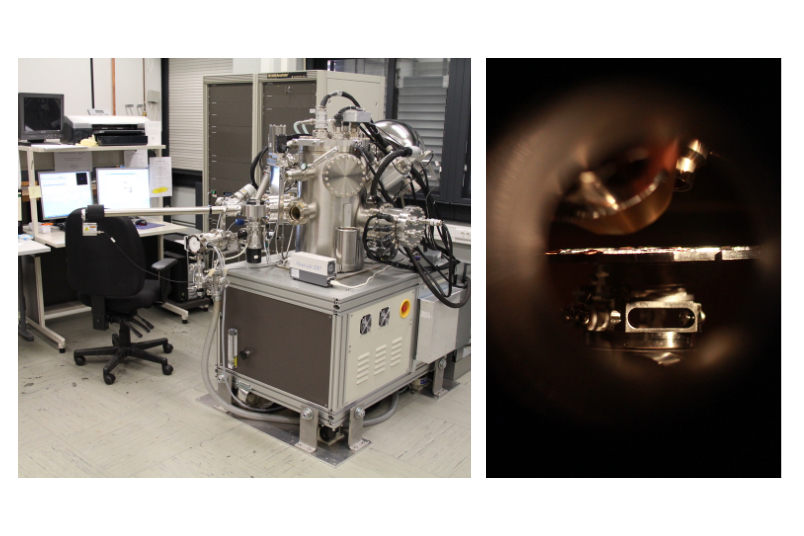- Ruhr-Universität Bochum

X-ray photoelectron spectroscopy
At the Research Department Plasmas with Complex Interactions an X-ray photoelectron spectroscopy (XPS) device is available for surface analysis. The instrument is located at the Chair for Experimental Physics II in the NB building on the RUB campus. Measurements in the context of research progress on campus are supported by the XPS instrument by providing insights into bonding states at the surface of coatings or materials. For example, this provides insight into the progression of growth behavior of coatings. In addition, depth profiling provides the opportunity to look deeper into the layer. Research on surface diagnostics is currently being carried out in CRC 1316, which will provide information on the influence of atmospheric pressure plasmas on catalysts. The operating principle of XPS is based on the extraction of electrons from a sample surface irradiated with X-ray photons. X-rays are generated when a beam of electrons with sufficient energy to promote transitions between atomic nuclear levels strikes an anode. The generated X-rays are directed to a monochromator where radiation with an energy of 1486.6 eV is selected. These X-ray photons are directed onto a sample. The interaction of the X-ray beam with the atoms of the sample leads to the excitation and extraction of electrons. The extracted electrons are collected in a detector where their kinetic energy is measured.
Each element is characterized by the binding energies of the electrons in the different atomic nuclei levels. The only elements that are not detectable in XPS are hydrogen and helium. Chemical bonding between atoms results in a shift in the binding energy position, allowing chemical analysis of the measured samples. This technique is referred to as ESCA (Electron Spectroscopy for Chemical Analysis).
X-ray photoelectron spectroscopy is performed using a Versaprobe spectrometer from Physical Electronics (PHI 5000 VersaProbe). Al Kα-radiation with an energy of hν = 1486.6 eV is produced at an aluminum anode. The measurement spot can be attached with diameters of 20 μm, 100 μm or 200 μm. Standard measurements are performed with an inclination angle of 45° between the sample and the detector. Angles between 15° and 85° can be used for angle-resolved measurements. An ion gun with an argon source is adapted to allow sputtering of samples with energies between 20 V and 4 kV.
Three types of sample holders are available, the small one is a 1-inch circular holder, and the larger one is a 2-inch circular holder. Finally, there is an angle resolved specimen holder that can hold up to eight specimens. The circular specimen holders have masks that can be used to measure wafers or other solid specimens.
